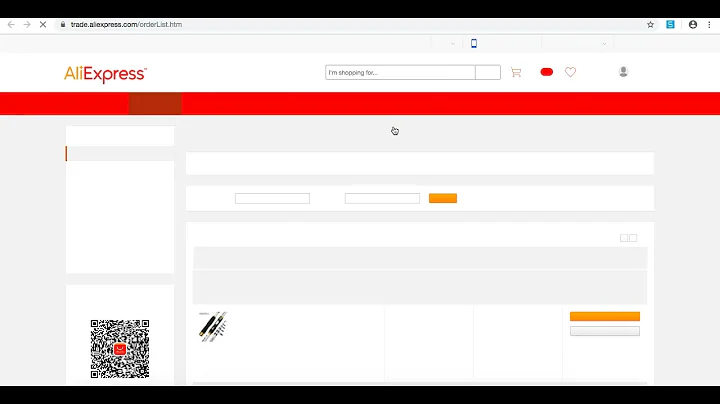The Dark Side of Dropshipping: Expert Insights and Tips
Table of Contents
- Introduction
- The Dark Side of dropshipping
- The Advantages of Dropshipping
- Low Barrier to Entry
- Simplicity
- Tax Benefits
- The Disadvantages of Dropshipping
- Intense Competition
- Lack of Customer Connection
- Shipping Times and Negative Reviews
- Account Bans
- Expert Insights
- Interview with The ECOM King
- Interview with Jordan Welch
- How to Avoid Account Bans
- Tips for Staying Compliant with Facebook
- Monitoring Account Quality Score
- Differentiating Your Product
- Transitioning Out of Dropshipping
- Conclusion
The Dark Side of Dropshipping
Dropshipping is often touted as an easy and lucrative business model, but it comes with its fair share of challenges. In this article, we will explore the dark side of dropshipping and discuss the advantages and disadvantages of this business model. We will also provide expert insights from successful dropshippers and offer tips on how to avoid common pitfalls, such as account bans.
Introduction
Dropshipping has gained popularity in recent years as a low-cost and low-risk way to start an online business. The basic premise of dropshipping is simple: you promote and sell products on your e-commerce store, but you don't hold any inventory. Instead, when a customer makes a purchase, you forward the order to the supplier who then ships the product directly to the customer.
While dropshipping offers numerous benefits, such as minimal upfront investment and no inventory management, it also has its dark side. In this article, we will delve into the challenges that dropshippers face and examine why dropshipping may not be the golden ticket to success that it is often portrayed to be.
The Advantages of Dropshipping
Before we discuss the downsides of dropshipping, let's first acknowledge its advantages. These are the reasons why many entrepreneurs are drawn to this business model:
Low Barrier to Entry
One of the main appeals of dropshipping is its low barrier to entry. Unlike traditional retail businesses that require hefty upfront investments in inventory and infrastructure, dropshipping allows almost anyone with an internet connection to start an online store. You don't need a large amount of capital to get started, making it an attractive option for budding entrepreneurs on a tight budget.
Simplicity
Dropshipping is a relatively simple business model. You don't have to worry about handling the logistics of shipping and storage, as the suppliers take care of that. All you need to focus on is acquiring customers through marketing and providing excellent customer service. The simplicity of dropshipping makes it accessible to individuals who may not have extensive business backgrounds or experience.
Tax Benefits
Another advantage that often goes unnoticed is the tax component of dropshipping. When you ship products directly from China, you can often avoid customs duties by shipping under the threshold set by your country. This can result in significant cost savings, especially for dropshippers who deal with high-value items. It is crucial to understand the tax regulations in your country and take advantage of any tax benefits that dropshipping offers.
The Disadvantages of Dropshipping
While dropshipping offers enticing advantages, it is not without its downsides. Let's dive into the challenges that dropshippers face and explore why this business model may not be as lucrative as it seems.
Intense Competition
One of the primary drawbacks of dropshipping is the intense competition. The low barrier to entry means that anyone can start a dropshipping store, resulting in a saturated market. As a dropshipper, you are constantly competing with other sellers, which can drive down prices and eat into your profit margins. Finding a unique product or a niche market becomes increasingly challenging as more and more players enter the field.
Lack of Customer Connection
In e-commerce, building a connection with your customers is crucial for long-term success. However, dropshipping often prioritizes acquisition over retention. Dropshippers are primarily focused on making a profit from the first purchase of a customer, rather than cultivating a loyal customer base. This can result in impersonal transactions and a lack of brand loyalty. Customers might feel disconnected from the brand, leading to lower customer satisfaction and repeat purchases.
Shipping Times and Negative Reviews
Dropshipping relies on suppliers in China, which can lead to longer shipping times compared to traditional retail models. Customers today have high expectations for quick and efficient shipping, and delays can lead to negative reviews and poor customer experiences. Dropshippers need to carefully manage customer expectations and clearly communicate any potential delays to avoid negative feedback that can harm their reputation.
Account Bans
One of the most significant risks in dropshipping is the possibility of account bans from payment gateways and advertising platforms. Dropshippers heavily rely on platforms like Facebook ads to drive traffic and sales. However, these platforms have strict policies, and any violation could result in a permanent ban. Once an account is banned, it can be challenging to recover, and the dropshipper's momentum is disrupted. Account bans can severely hinder a dropshipper's ability to scale their business and find success.
Expert Insights
To gain a deeper understanding of the challenges and strategies related to dropshipping, we interviewed two experts in the field: The ECOM King and Jordan Welch. Both individuals have extensive experience with dropshipping and have successfully navigated the ups and downs of this business model.
Interview with The ECOM King
The ECOM King is a well-known figure in the dropshipping community, having built multiple e-commerce brands and dropshipping stores. In our interview, he provided valuable insights into the dropshipping industry and shared his strategies for avoiding account bans and improving shipping times. He emphasized the importance of staying compliant with Facebook's policies, creating unique content, and utilizing agency accounts to overcome account bans.
Interview with Jordan Welch
Jordan Welch, an accomplished entrepreneur, runs a YouTube channel where he documents his entrepreneurial journey. He started with dropshipping and eventually transitioned into holding inventory and building a brand. In our interview, he stressed the significance of acquiring marketing skills and focusing on customer satisfaction to build a successful brand. He also mentioned the challenges of dealing with ad account bans and shared his strategies for mitigating the risk.
How to Avoid Account Bans
Account bans can be detrimental to a dropshipper's business. To minimize the risk of being banned, it's essential to follow certain guidelines and best practices. Here are some tips for staying compliant with Facebook and reducing the likelihood of account bans:
-
Create unique content: Avoid using other people's content or factory-provided content. Instead, invest in creating high-quality, original videos and images that resonate with your target audience.
-
Monitor your account quality score: Regularly check your account quality score in the settings of your Facebook business manager. Strive to maintain a high score by adhering to Facebook's guidelines and providing a positive user experience.
-
Differentiate your product: To stand out in a competitive market, consider branding your product and enhancing its uniqueness. Utilize product designers and graphic designers to create custom packaging and other branding elements.
-
Transition out of dropshipping: Once you have validated your product and achieved a certain level of success, explore options for holding inventory and utilizing a 3PL (third-party logistics) provider. This will allow you to improve shipping times and have more control over the customer experience.
Conclusion
Dropshipping is not a foolproof business model, and it comes with its fair share of challenges. While the low barrier to entry and simplicity of dropshipping make it an attractive option for aspiring entrepreneurs, it is crucial to be aware of the intense competition, lack of customer connection, shipping time issues, and the risk of account bans. By understanding these challenges and implementing strategies to mitigate them, dropshippers can increase their chances of long-term success. Remember, the key to thriving in the dropshipping world is to continuously adapt, improve, and prioritize customer satisfaction.















